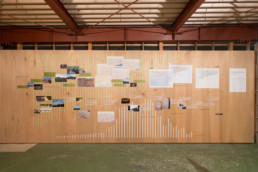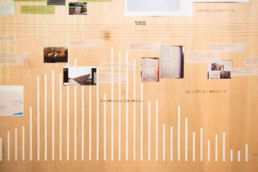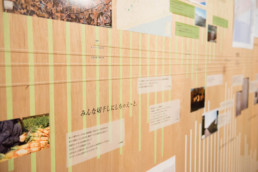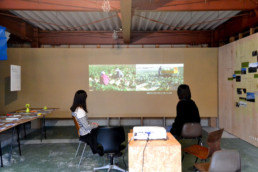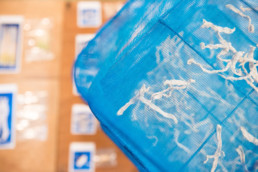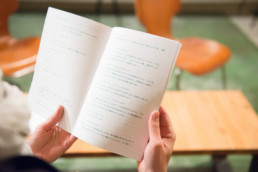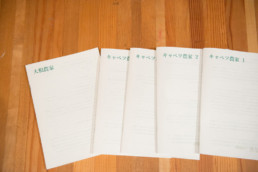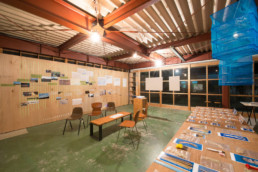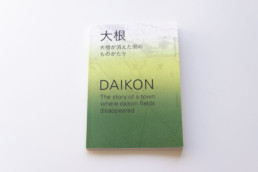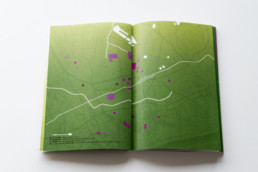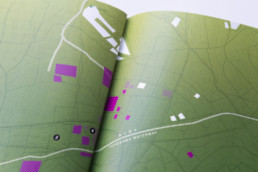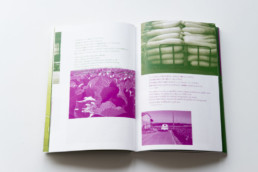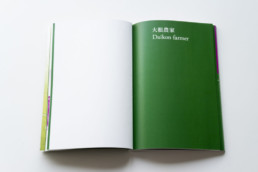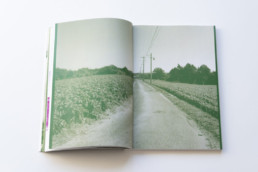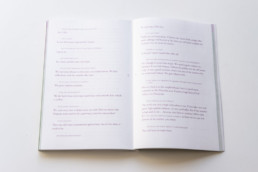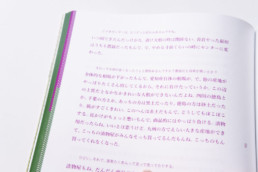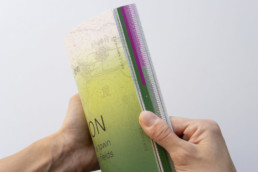2016年11月、愛知県田原市の最北、渥美半島の付け根にある六連町の、ある大根農家を訪ねたことから、この旅ははじまった。旅のきっかけは、「大根を作る農家が少なくなっている」という、どこからともない話。おでんや刺身のツマなど、私たち日本人にとって、とても身近な 野菜・大根が農家から不人気とは、一体どういうことなのか。真相を確かめに大根農家に会いに行ってみようと、私たちは人づてに知り合ったある大根農家のもとを訪ねた。
私たちはこの町で、計5人の農家たちと出会った。1人は現役の大根農家、ほかの4人は大根農家が紹介してくれたキャベツ農家で、彼らはみな元・大根農家である。かつては大根畑で埋め尽くされていたという六連町は、現在はどこまでもキャベツ畑が広がる、日本有数のキャベツの産地だ。
「産地」という時間と空間を生きる農家それぞれの中には、さまざまな言葉や映像で作物や土地に関する記憶が形づくられている。彼らと話 す中で、彼らが詩人のように作物を何かにたとえる言葉や、風景や気候の小さな変化に対する細やかな感覚に驚かされた。そして、それぞれの 言葉を読み返すと、ある部分は他の数人の記憶と重なり合い、ある部分 はその人だけのパーソナルな記憶として存在している。そしてそれらは、全体としてこの町の辿ってきた運命と、今は見ることのない町の風景を浮かび上がらせている。
「単一栽培」という現代特有の農業のかたちがあってこその、「見渡す限りの大根畑/キャベツ畑」。それは、一見土地に深く根付いているようで、経済や時代の状況で、突然オセロをひっくり反したように変わってしまう。とても危うく、はかない風景が、今も六連町にはある。
企画・リサーチ・デザイン:Food Atlas
取材コーディネート:maru communicate
プロジェクト期間:2016年11月~12月
Our journey started in November 2016 when we visited a daikon farmer in Mutsure town in the northern tip of Tahara city, which is located at the base of the Atsumi Peninsula. There was a rumor floating around that the number of daikon(white radish) farmers was decreasing, which is what led us to begin this journey. How can a vegetable like daikon, that is quite familiar to Japanese as oden (Japanese stew often eaten in winter. A variety of ingredients are cooked in soup.) and garnish for sashimi, be unpopular among farmers? In order to discover the truth, we decided to visit a daikon farmer that a friend had introduced us to.
We have now met 5 farmers in total in the town. One of them is a daikon farmer, and the rest are cabbage farmers who we got to know through him. All of the cabbage farmers are ex-daikon farmers.
Future town, where there were full of daikon fields, is now one of nation’s leading growing center of cabbage, crowded with cabbage fields as far as you can see.
The memories of crops and lands are formed through each farmer’s words and images as they live in the time and space of a ‘growing center’. Through our conversations with them, we were surprised by the words they use to describe their crops, which are often very poetic, or their delicate sensibility toward minor changes in sceneries and climates. And as we read through their words again, we discovered that some overlap with others’ memories, while others exist in the realm of the personal. As a whole, all of their commentary shines a light on the fate the town followed and its lost scenery―that which once was but is no longer visible today.
The fact that daikon and cabbage fields spread as far as the eye can see here is the result of monoculture, which is characteristic of modern agriculture. It seems to be deeply rooted to the local land, but in reality it can change suddenly depending on the economic situation or other mitigating factors; it’s like flipping the pieces on an Othello game. Thus, the scenery in Mutsure town remains very fragile and transient event today.
Concept, research, design:Food Atlas
Interview coordinate:maru communicate
Period:Nov-Dec 2016
Movie
Exhibition
企画・デザイン:Food Atlas
展示会場:ギャラリーあ(静岡県浜松市)
展示期間:2017年3月18日ー4月2日
Concept & design:Food Atlas
Site:Gallery A (Hamamatsu, Shizuoka)
Date:18/03/2017 – 02/04/2017
photo by 青木遥香
Book
六連町で出会った計5人の農家へのインタビュー全編を、写真やリサーチマップとともに収録。
*A5サイズ / 全164ページ
The archive of interviews with five farmers we met in Mutsure town, compiling pictures and research maps.
*A5 size, 164 pages
「わたしたちのたべもの」プロジェクトについて
グローバル化や食品産業の発達から、自分が口にするものの出所がわかりにくい時代になりました。いっぽう「食」は、私たち誰もが日常的に行う行為であり、生きていくためには必要不可欠です。
食は大昔から、政治や文化、経済などと深くつながっていて、土地で採れるものを食べるというローカルな側面もありつつ、世界的な時代の流れとも密接に関わってきました。また、食材は食べ物であると同時に、生命でもあります。私たちは、食べることで他の生命のエネルギーをもらっているのだということも、大量生産の食品を食べる際には忘れがちです。
「わたしたちのたべもの」プロジェクトでは、誰もが日常的に食べる食材、食にまつわる行為や現象をリサーチをし、私たちの生活がどのように世界や自然とつながっているか、ということを展示や出版物、プロダクトなど、さまざまなビジュアル・メディアを通して伝えることを目指します。
About 'Our Food' project
We live in a time when it’s very difficult to know where our food comes from due to the globalization and the progress of food industries. At the same time, eating is an everyday act and essential for us to survive.
Food has been deeply connected to politics, culture, and economics for a long time. It has been locally harvested and consumed but on the other hand, greatly affected by the global flow of the times. Food is what we eat and also the lives of other living things. Mass-produced food products often make us forget the fact that we receive energy of other lives.
In ‘Our Food’ project, we research ordinary ingredients that everyone eats for daily meals, or acts and phenomena around food. The project aims at communicating how our lives are connected to the world and nature through various visual media such as installations, publications, and products.
